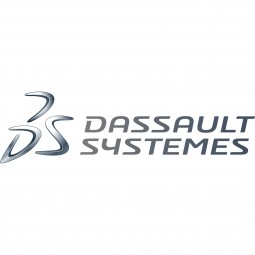
Technology Category
- Networks & Connectivity - 5G
- Networks & Connectivity - Cellular
Applicable Industries
- Equipment & Machinery
- Telecommunications
Applicable Functions
- Human Resources
- Product Research & Development
Use Cases
- Transportation Simulation
- Virtual Prototyping & Product Testing
Services
- System Integration
The Customer
ALCAN Systems
About The Customer
ALCAN Systems is a start-up company founded in 2016 with a mission to create a low-cost smart antenna system for cellular and satellite communication. The company develops innovative 5G-ready antennas using liquid-crystal-based phased-array technology. These antennas allow high-performance electronic beam-steering in a compact, lightweight package, enabling ground-based terminals to follow satellites across the sky or a 5G device to stay in contact with the base station. ALCAN Systems is at the forefront of revolutionizing fields from communication and entertainment to industry, logistics, and healthcare by allowing high-speed data just about anywhere.
The Challenge
ALCAN Systems, a start-up founded in 2016, aimed to create a low-cost smart antenna system for cellular and satellite communication. The company was developing liquid-crystal-based phased-array antennas that allow high-performance electronic beam-steering in a compact, lightweight package. However, the development of these innovative antennas posed significant challenges. Traditional mobile technology used omnidirectional antennas that provided coverage from as many directions as possible. This approach was not suitable for the future of satellite broadband and millimeter-wave 5G. For these technologies to work effectively, the end-user needed a constant line of sight to the satellite, which required a very high directivity and gain to maintain contact without excessive power use. The same was true for 5G, especially at very high frequencies where loss from waves passing through the air and other materials was much higher. ALCAN Systems needed a solution that could overcome these challenges and deliver reliable high-speed data links in challenging environments.
The Solution
To address these challenges, ALCAN Systems turned to Dassault Systèmes SIMULIA and their electromagnetic simulation tool, SIMULIA CST Studio Suite. This tool allowed ALCAN Systems to manage the complexity of developing effective antenna arrays and run extensive simulations. The phased-array antennas developed by ALCAN Systems were much more complex than older antennas, and the CST Studio Suite provided the necessary solvers at both the component and system levels. The results from the CST Studio Suite were accurate and gave ALCAN Systems engineers trustworthy insight they could rely on. Using simulation, ALCAN Systems developed a phased-array antenna product based on LCD technology. The simulation helped them meet challenges during the design process and identify the root cause of problems that emerged. The company was able to develop an innovative new approach using phased-array antennas, using LCD technology to precisely control the time delay and phase shift between the elements.
Operational Impact
Quantitative Benefit

Case Study missing?
Start adding your own!
Register with your work email and create a new case study profile for your business.
Related Case Studies.

Case Study
Smart Water Filtration Systems
Before working with Ayla Networks, Ozner was already using cloud connectivity to identify and solve water-filtration system malfunctions as well as to monitor filter cartridges for replacements.But, in June 2015, Ozner executives talked with Ayla about how the company might further improve its water systems with IoT technology. They liked what they heard from Ayla, but the executives needed to be sure that Ayla’s Agile IoT Platform provided the security and reliability Ozner required.

Case Study
IoT enabled Fleet Management with MindSphere
In view of growing competition, Gämmerler had a strong need to remain competitive via process optimization, reliability and gentle handling of printed products, even at highest press speeds. In addition, a digitalization initiative also included developing a key differentiation via data-driven services offers.

Case Study
Predictive Maintenance for Industrial Chillers
For global leaders in the industrial chiller manufacturing, reliability of the entire production process is of the utmost importance. Chillers are refrigeration systems that produce ice water to provide cooling for a process or industrial application. One of those leaders sought a way to respond to asset performance issues, even before they occur. The intelligence to guarantee maximum reliability of cooling devices is embedded (pre-alarming). A pre-alarming phase means that the cooling device still works, but symptoms may appear, telling manufacturers that a failure is likely to occur in the near future. Chillers who are not internet connected at that moment, provide little insight in this pre-alarming phase.

Case Study
Premium Appliance Producer Innovates with Internet of Everything
Sub-Zero faced the largest product launch in the company’s history:It wanted to launch 60 new products as scheduled while simultaneously opening a new “greenfield” production facility, yet still adhering to stringent quality requirements and manage issues from new supply-chain partners. A the same time, it wanted to increase staff productivity time and collaboration while reducing travel and costs.

Case Study
Integration of PLC with IoT for Bosch Rexroth
The application arises from the need to monitor and anticipate the problems of one or more machines managed by a PLC. These problems, often resulting from the accumulation over time of small discrepancies, require, when they occur, ex post technical operations maintenance.

Case Study
Robot Saves Money and Time for US Custom Molding Company
Injection Technology (Itech) is a custom molder for a variety of clients that require precision plastic parts for such products as electric meter covers, dental appliance cases and spools. With 95 employees operating 23 molding machines in a 30,000 square foot plant, Itech wanted to reduce man hours and increase efficiency.



